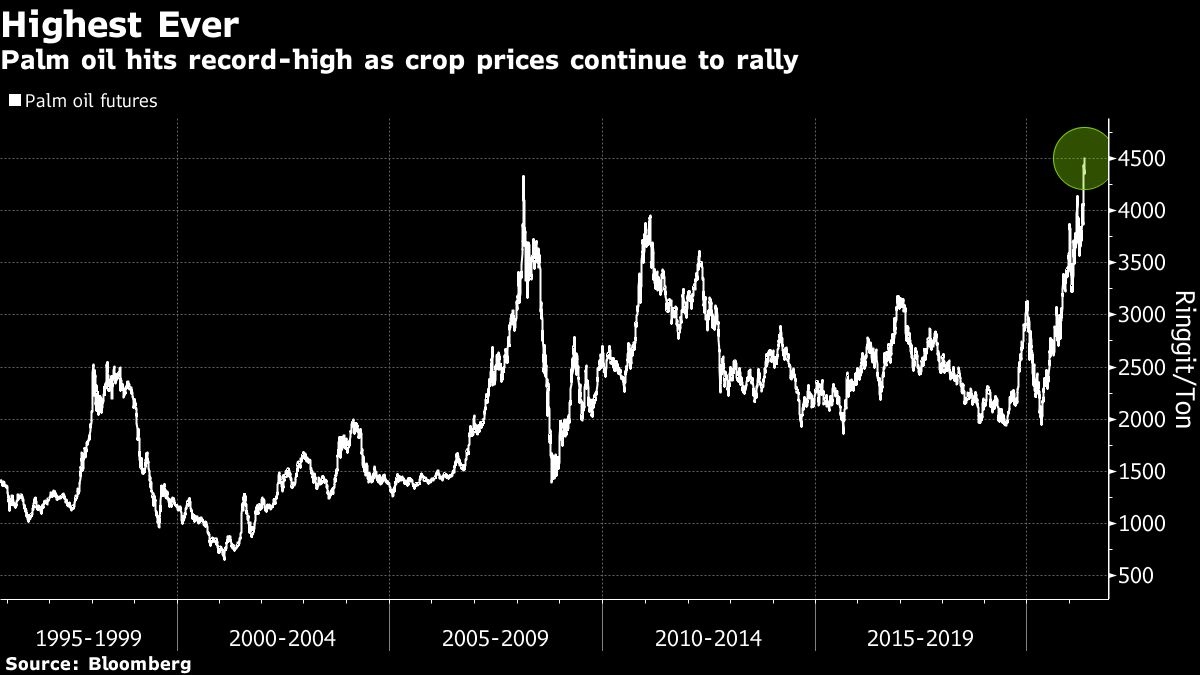May 12, 2021
Chocolate is about to get more expensive
, Bloomberg News
North America's debt burden will overwhelm the commodity boom: David Rosenberg
The meteoric rise in palm oil prices to record levels is poised to inflate costs for everyone from restaurants to confectionery and cosmetic manufacturers, and could potentially change consumption patterns.
The world’s most consumed edible oil is found in products as diverse as chocolate, pastries, soaps, lipstick and biofuel, and is widely used in Asian restaurants. The tropical oil has surged more than 120 per cent in the past year and burst through 4,500 ringgit (US$1,091) a ton to a record on Wednesday.
“The rise in prices to all-time highs is bound to affect consumer habits,” said Gnanasekar Thiagarajan, head of trading and hedging strategies at Kaleesuwari Intercontinental. “Consumption is expected to go down, and if this uptrend in prices is maintained, there could be a shift in food habits that could altogether change food preferences.”

The world’s top importer is India followed by China, and the largest producer and user is Indonesia. In Europe and the U.S., the oil faces headwinds from consumers over concerns that its cultivation causes deforestation and harms animal habitats. The globe’s top confectionery and cosmetic companies have sought to ensure that the palm oil they use is sustainably produced.
Consumption in India is especially at risk because of a drop in demand outside the home and the impact of the world’s worst COVID-19 outbreak, according to Atul Chaturvedi, president of Solvent Extractors’ Association. The country is a very price-sensitive market and high prices are hurting demand, he said.
Still, those companies wanting to shift out of palm to other oils may find opportunities limited, and they’ll be facing higher costs whichever option they choose. Soybean oil, the second-most consumed oil, is up 150 per cent in the past year, and sunflower oil prices from Ukraine have more than doubled. It may be better to stick to palm after all.
--With assistance from Atul Prakash and Pratik Parija.


